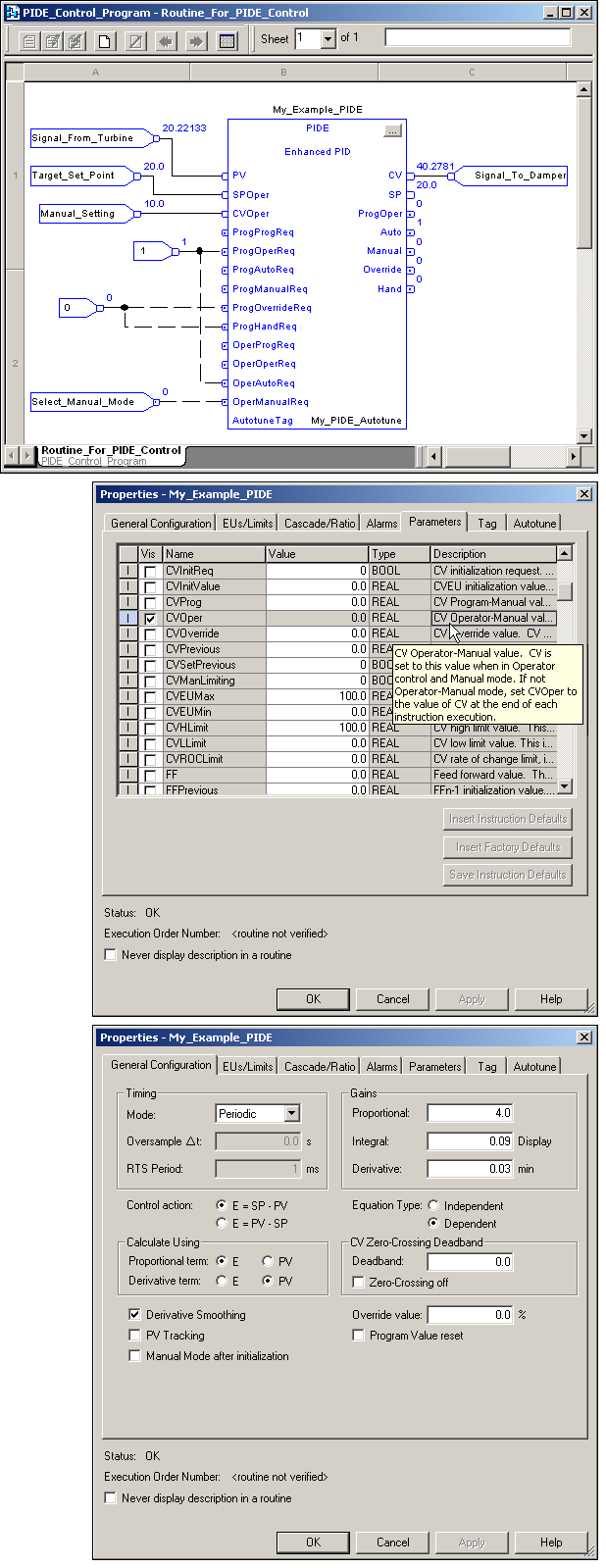PIDE for Process Control
PIDE (Enhanced PID) for process control … do your systems use this?
 Many technicians consider PID control (Proportional, Integral, Derivative) to be the “deep end of the pool” when it comes to PLC programming topics. With the addition of the new PIDE instruction (Enhanced PID) – the pool has suddenly gotten a lot deeper.
Many technicians consider PID control (Proportional, Integral, Derivative) to be the “deep end of the pool” when it comes to PLC programming topics. With the addition of the new PIDE instruction (Enhanced PID) – the pool has suddenly gotten a lot deeper.
PID and PIDE are used for “process control” – which includes the automatic control of systems such as temperature, flow rate, pressure, and speed. The cruise control on a car is a good example of this type of control. Basically you tell the controller how fast you want to go (the Setpoint) – the controller samples the actual speed (the Process Variable) – and then the controller calculates an output value (the Control Variable) and sends that signal to the gas pedal.
Whenever the term “Enhanced” gets mentioned, the first question that usually pops up is: “Will this Enhanced instruction give me better control over my process?” The simple answer is usually, “No.”
It is true that the PIDE does indeed offer more “bells and whistles” which can make it easier to shift between manual and automatic modes – and between operator control and program control states – but in almost every case, the actual under-the-hood output of the “enhanced” PIDE will be exactly the same as the output of a much simpler PID instruction. We have hands-on exercises available in our Boot Camp classes to prove this – by graphing the responses of a PID and a PIDE instruction – both running simultaneously on a single device such as one of our Hotrod trainers.
The PIDE instruction also offers an “Autotune” feature which works reasonably well in some situations. The PID doesn’t support this feature.
The biggest obstacle to learning the PIDE instruction is the sheer size of the thing. There are 165 settable “parameters” available. Suppose that we were to allow just 30 seconds for each of these parameters – to merely call out its name and to give a very brief overview of its function. That would require over 80 minutes of classroom time. Naturally we don’t take that same mind-numbing approach in our Boot Camp classes. Instead we cover the necessary material through hands-on exercises.
We have the hands-on equipment and the course material necessary to help you learn the troubleshooting skills required for PIDE control. The big question is whether or not you actually need this type of training. We’ll be glad to help you decide – just give us a call.
